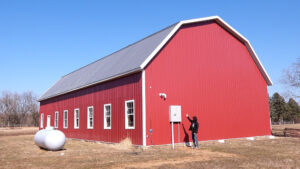
Kitchen Island, Barn Power – March 2024 Update
Welcome to my shop! This is a quick update to let you know what I’ve been up to. This big chunky thing is the leg
Today, we’re going to go visit my friend, Matt Collins. He is a logger, a sawyer, and a woodworker. He’s going to tell us his story about how he got to where he is at and give us a look around his operation. This is the third woodworker that I have done a video about, with the first being Paul Lemiski seven years ago, and the second being Matt Rubin a little over a year ago. I’m hoping to turn these types of visits into a series, and I want to make a more conscious effort to do these types of videos highlighting other woodworkers’ businesses. I’ve already reached out to a few people, and I already have some visits pending and scheduled. There’s so many people that I find inspirational, aspirational, and they’re just doing plain cool stuff that I want to be able to meet and share with all of you.
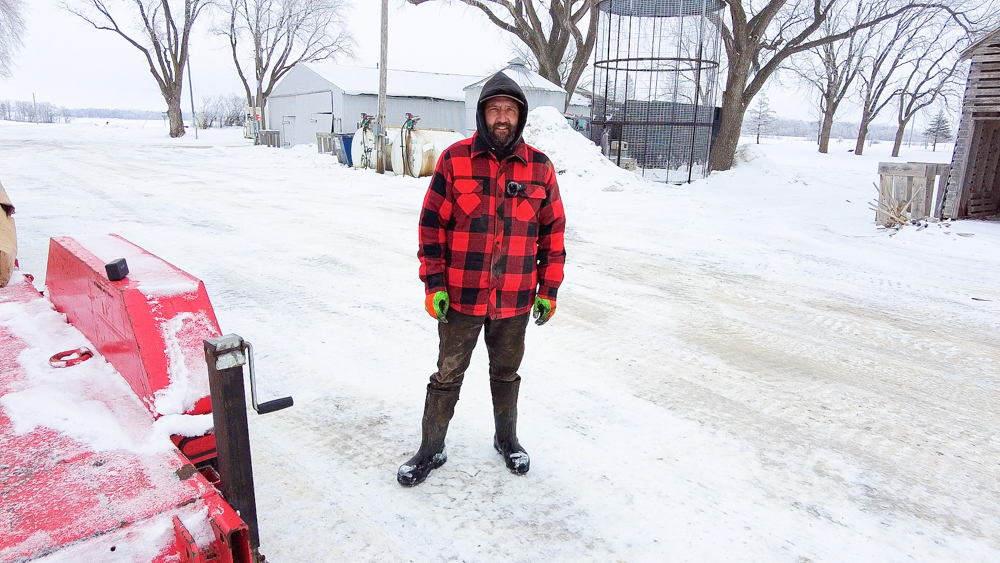
I made it, and here I am with Matt Collins. He is the third generation working at his tree company. His grandfather started the tree business and cleared a lot of the elm trees in Minneapolis for the Park Board when the Dutch Elm came through, then his dad took over the company and mostly did residential clearing. Now he focuses on large scale land clearing for federally and state funded projects.
Matt Cremona: You’re doing select logging on what you’re clearing, so they can become saw logs?
Matt Collins: Yep, we use everything. If it makes sense to cut a log and haul it and you can make money, then we do it. But if it’s too far away and you can’t find a home for the logs, then we try to chip it. But for the most part we use everything.
Matt Cremona: Right now you’re working in Aitken, which is kind of far, so are you hauling anything back?
Matt Collins: You know, there’s no good saw logs up there. It’s all box elder and some soft maple. There’s a lot of people up there that want firewood, so I’ve just been giving them logs for that, because it’s a good way for us to get rid of it.
Matt Cremona: And with the chips, there’s obviously a market for those too, if you’re actually making them.
Matt Collins: Yeah, we chip everything, haul it to St. Paul, and it gets turned into biomass energy. And then there’s a lot of erosion control guys that make those bio logs, and they use wood chips for those too. The only thing that doesn’t get used is the stump. We grind all those.
Matt Cremona: You’re doing that every day?
Matt Collins: Monday through Friday. And then about 10-15 years ago, my brothers bought a sawmill just for fun. It just turned into a hobby of mine, and all of a sudden I had more wood than I could ever use, so I started selling it.
Matt Cremona: That’s actually how we met. I responded to one of your ads on Craigslist for fresh sawn green wood maybe 12 years ago. So over the years, I’ve been down here quite a few times, hauling fresh sawn green lumber back to my house and drying it in my basement. It’s been interesting to see how your business has grown, it’s a very different place than it was the first time I was here.
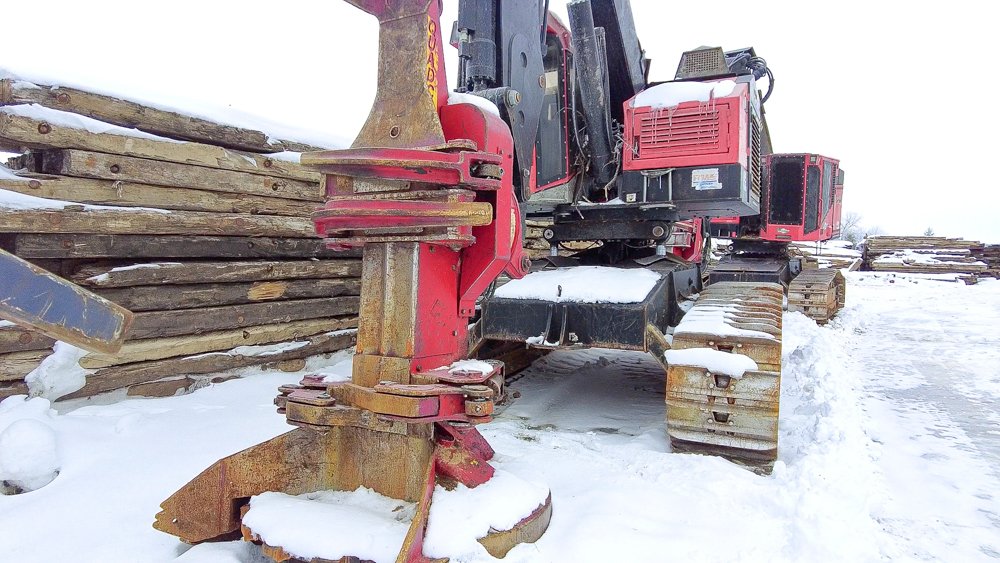
Matt Collins: This is what we used to cut the trees down. We have two feller bunchers, and we aren’t using these for our current job in Aitken because the ground is so wet. These are about 80,000 pounds, so we have been ripping everything down with backhoe instead.
Matt Cremona: So for anyone who hasn’t seen this before, tell us what we’re looking at.
Matt Collins: It’s a feller buncher. There’s a big blade that spins real fast, and it has a two and a half inch curve. It’s an inertia saw, so the giant steel disc gets spun up and then you plunge it into a tree. They also have accumulators which you can open and close around a tree so that you can then cut another tree. That’s why it’s called a buncher!
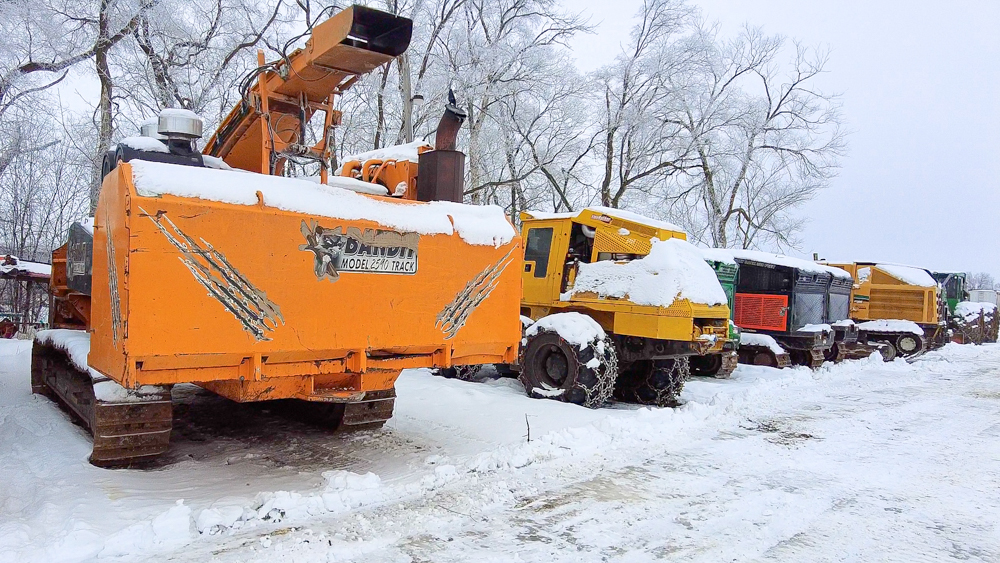
Matt Collins: This is our biggest chipper. It’s a Bandit 2590, and it is remote controlled. It’ll take a 25-30 inch tree.
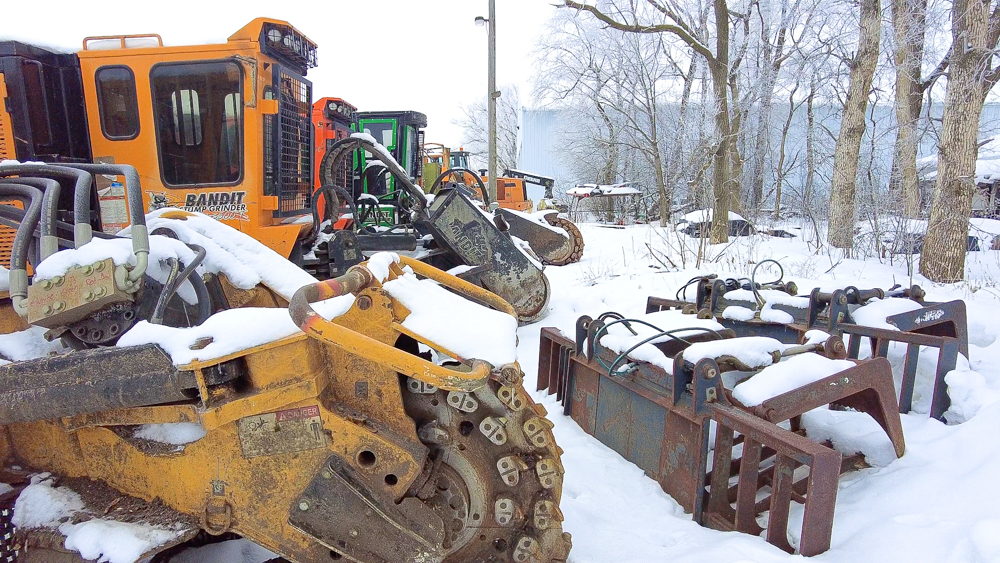
Matt Collins: These are some of the big stumpers that we have. We have three Bandit 3500s and then a Vermeer FT300. This thing rips, I love it.
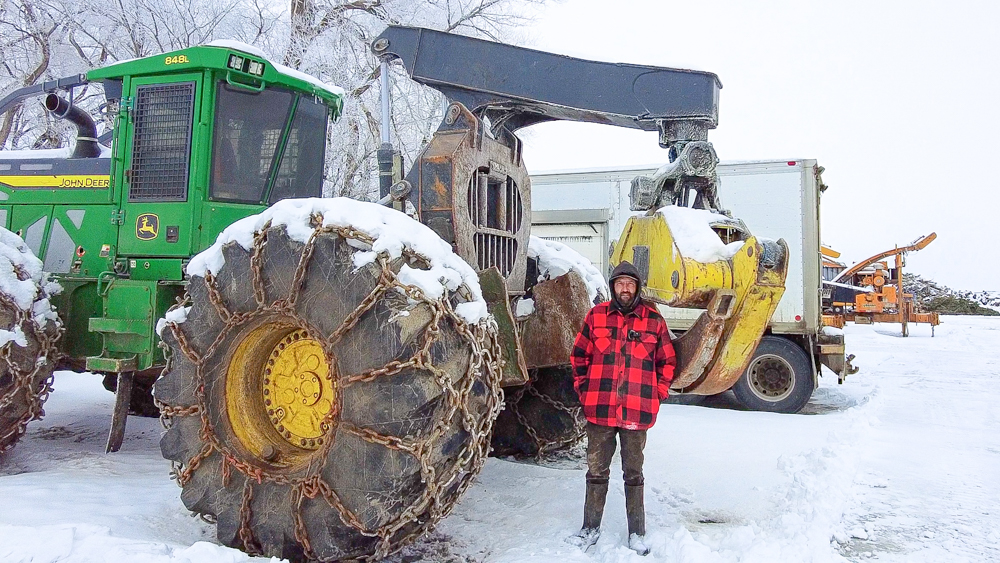
Matt Collins: This is my favorite skidder. It’s the John Deere 848. This is what we use to skid logs and tree to the chipper.
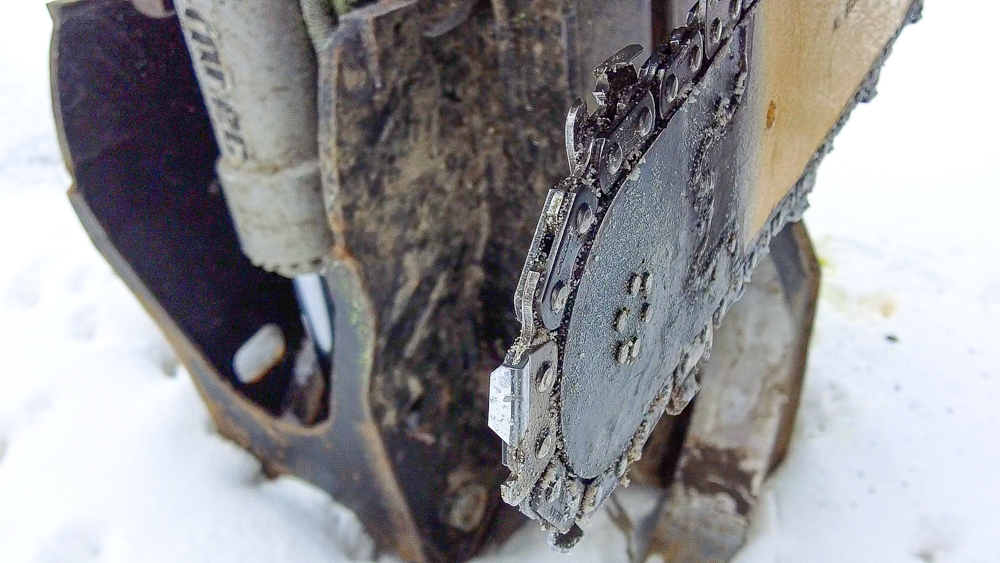
Matt Collins: Here is the chain on the grapple saw. It’s a big three quarter inch chain. I like to use the grapple saw to grab a tree, cut it, then lay it down. You’re not supposed to do that because it pinches the bar, but I’ve gotten pretty good at it.
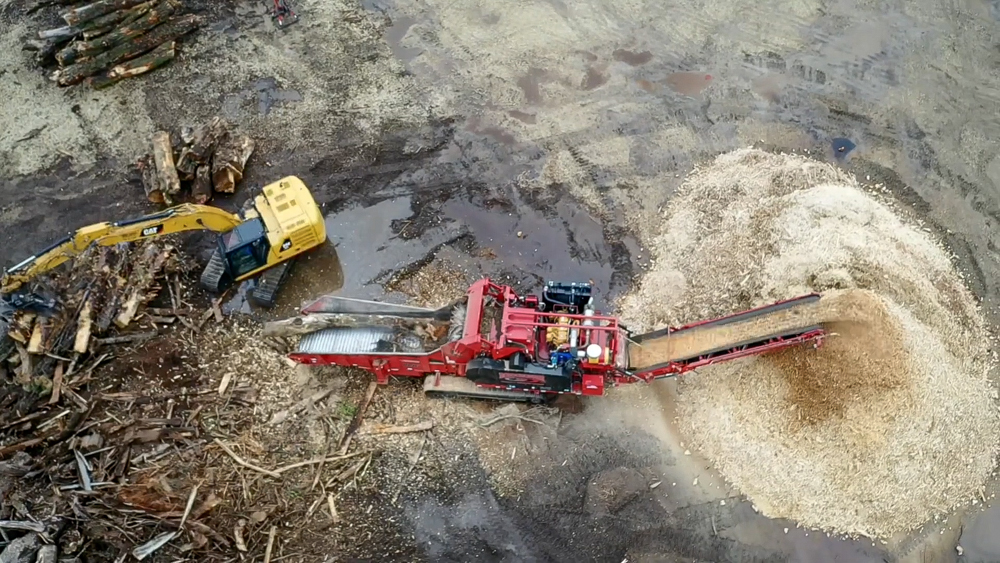
Matt Cremona: I see your scrap piles a lot smaller than last time was here.
Matt Collins: They just came and ground it, which gets done about 3-4 times a year, and that gets turned into landscape mulch. They really like cottonwood and maple, because it dyes the best.
Matt Cremona: At some point you decided you wanted to buy a saw mill to cut a bunch of these logs. What did you get and when was that?
Matt Collins: We got an LT35, all manual, which lasted a couple of weeks. We said screw this, and then we bought an LT50. We had that for quite a while and then we bought an LT70. But now we have the Wood-Mizer transfer deck and the incline conveyor. That’s been kind of a game changer, because it’s just one guy milling and one guy just feeding them logs and you can really run through the logs.
Matt Cremona: If you were doing bigger stuff than those saws back in the day, how were you cutting giant slabs?
Matt Collins: I built a pole saw. It was a 10-foot pole that we filled with concrete. I had a big arm on it, and then I had a Stihl 880 with a 72 inch double-ended bar on it. And it works pretty good.
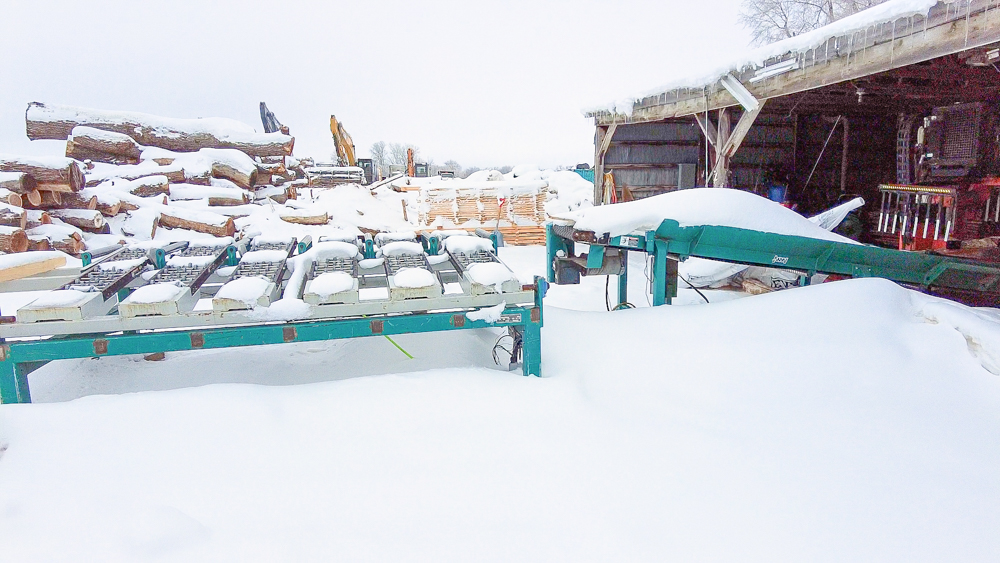
Matt Collins: Here is the Wood-Mizer, a bit snowed in right now. The saw is inside covered up, and then you have the conveyor that dumps all of the cuts out here. All of the good wood will go to one side, and all of the slab wood will get pushed to the other side. Then we bring the skid loader in and scoop it up and stack the lumber.
Matt Cremona: So this saw you’ve had for five years?
Matt Collins: Long time, yeah. We used to make silt fence stakes so that’s why we bought a beefier saw.
Matt Cremona: Oh that’s right, tell us about that.
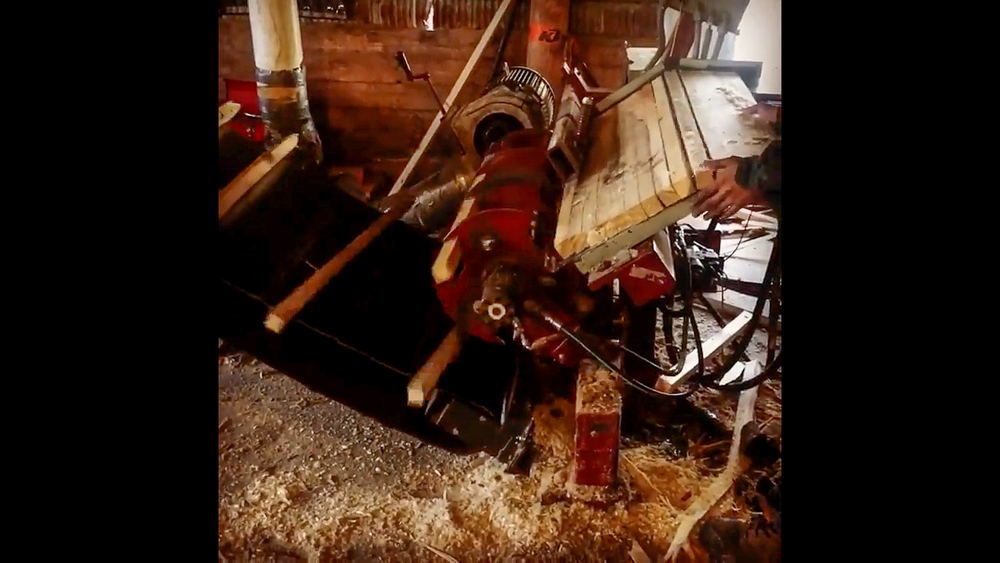
Matt Collins: We mass produced them, like 200,000-300,000 stakes a year. Once everything was paid off, we quit. But we did that for a long time, because it was consistent, stead income you could rely on. And that’s what set us up with milling.
Matt Collins: Why don’t we go inside and check out a couple tables, because I actually do woodworking too.
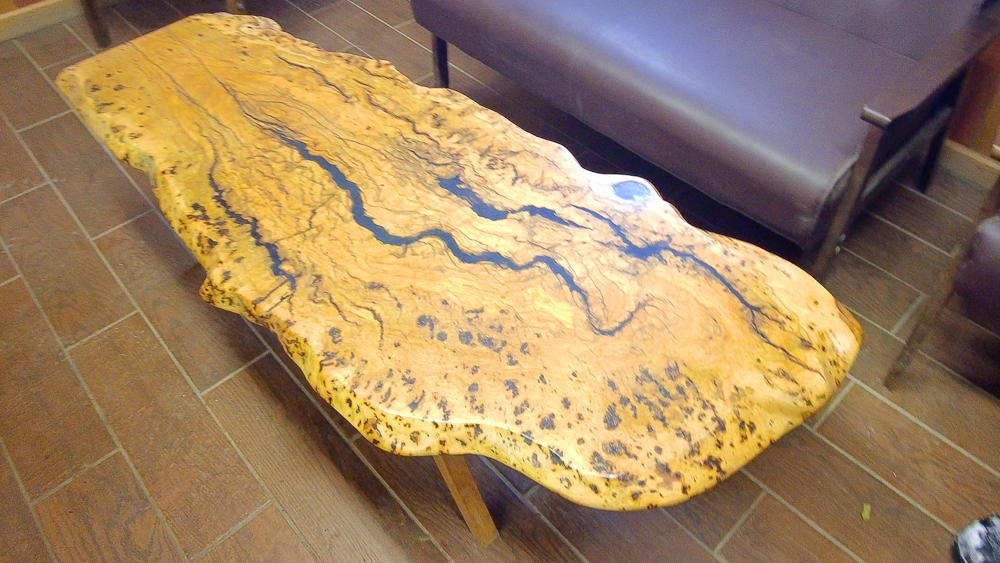
Matt Collins: This table actually came off of Prince’s property in Chanhassen.
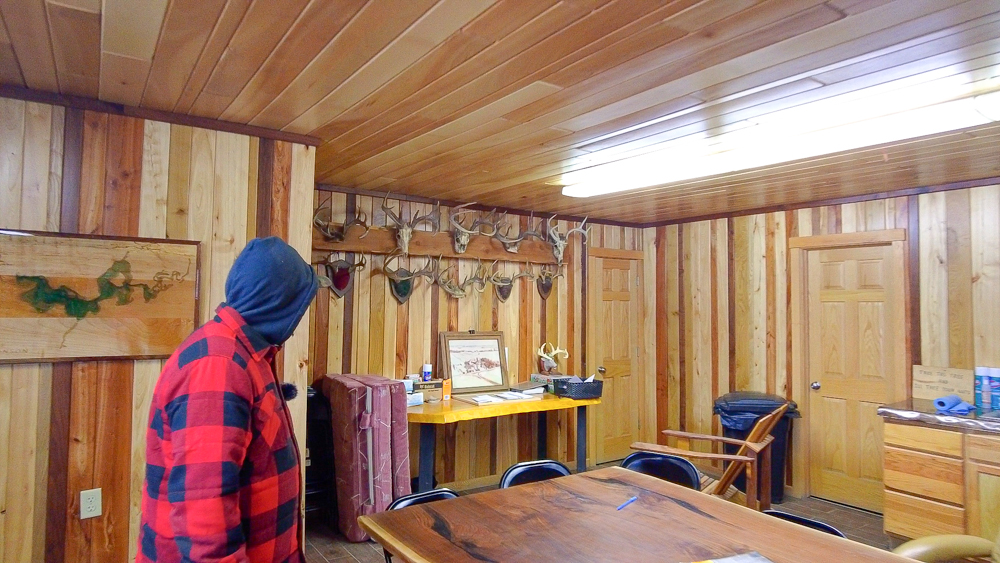
Matt Collins: Everything in this room we sawed and milled. This is a bookmatched walnut table that I made, and we did all of the tongue and groove for the walls and ceiling.
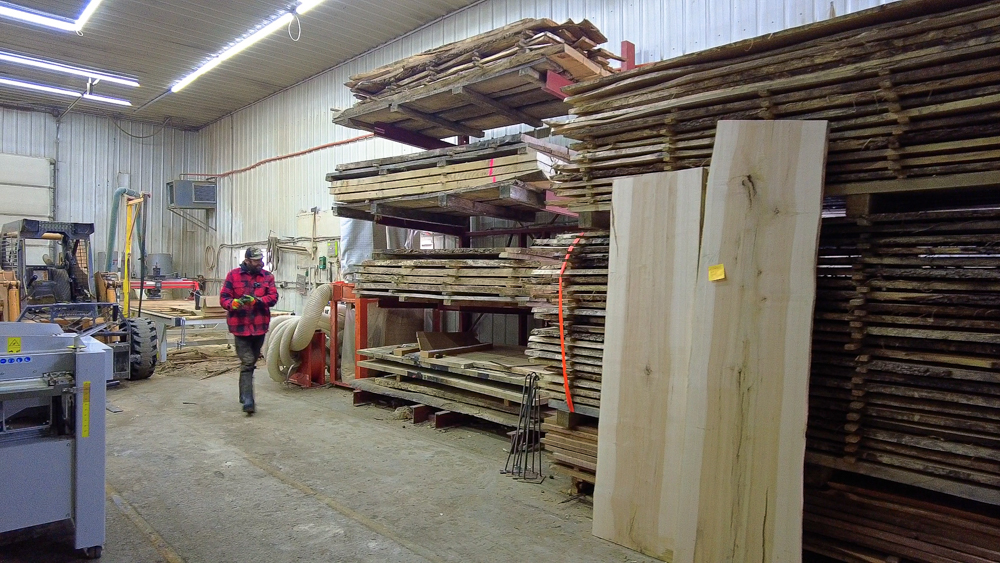
Matt Cremona: Here we are in Matt’s shop now. While we’re in here, let’s talk about what sort of wood you sell. Is there a certain thing you typically stock or are you trying to keep a little bit of everything?
Matt Collins: I try to stay on top of black walnut, because everybody wants black walnut. I move a lot of walnut, but I have five quarter rough cut usually on hand. I have short charcuterie boards like S2S. I’d have thicker live edge slabs, surfaced on two sides. It’s all domestic wood. I cut the trees down myself, and I mill it and air dry it for two years, and then I put it in the kiln. Then I bring it in here, put it on the wood whizz, plane it, throw it up against the wall, and sell it.
Matt Cremona: So you sell one piece slabs or can someone buy a whole bunk?
Matt Collins: Yep, I have everything. People can buy one slab. If you buy a whole truckload I’ll do a quantity discount. I try to have a little bit of everything, but it’s mostly all live edge slabs, and I don’t have any exotics. Everything I have is what I’ve cut down, so it’s just whatever I happen to come across out there.
Matt Cremona: What thicknesses do you typically have in stock?
Matt Collins: I usually cut everything 10 quarter or 12 quarter. I prefer 10 quarter because I think you get a little more yield out of the wood. After it’s surfaced, it’s usually about two inches thick, give or take.
Matt Cremona: So, the scale you’re doing things, technically a lot of this is urban lumber.
Matt Collins: Yeah, a lot of it is because a lot of it is getting cleared for urban development. In the winter we clear for stream bed restorations, in the spring we clear for street reconstructions, and then around July, we start clearing for housing developments.
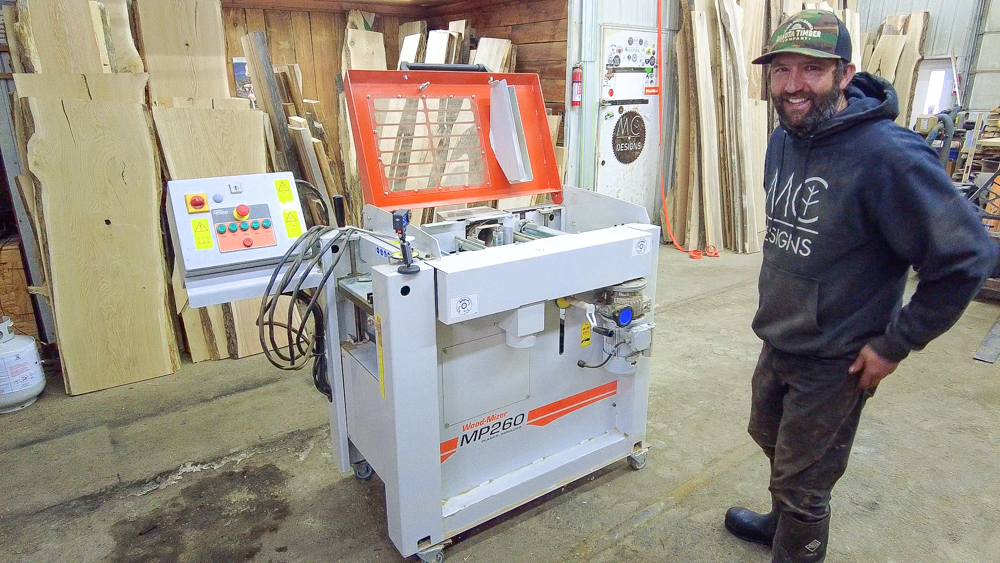
Matt Cremona: And this is the reason that I am here: to pick this up. This is a four-headed molder. It’s pretty slick; you stick a rough board in one end and you get a fully surfaced, fully profiled piece on the other end.
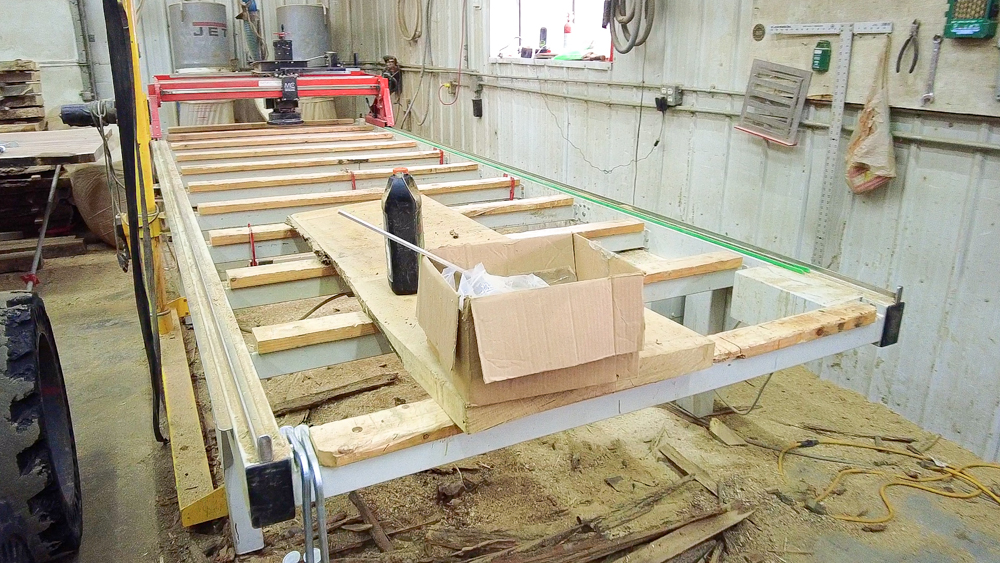
Matt Collins: This is the Wood Whizz. It’s kind of a stupid name for a machine, but I can’t say anything bad about it. I’ve had it for many, many years, and it’s been a total workhorse for me. It’s like a router sled on steroids. It has five carbide inserts on it, and then it has a sanding pad that screws right to the bottom of the planer head so you can sand it.
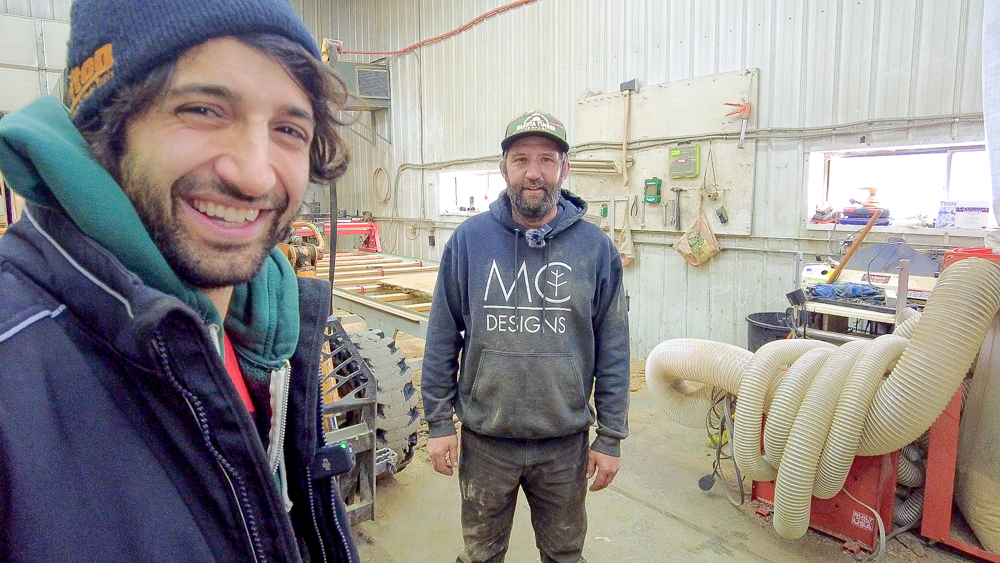
Matt Cremona: Thank you so much, Matt, for showing us around and humoring me.
Again, a big thank you to Matt for taking the time out of his day to show us around and walk us through everything he’s got going on over there. He is one of the hardest working, most motivated people that I know. It’s very cool to share a little bit of the story with you, and now you know who he is.
Thank you as always for joining, I greatly appreciate it. If you have any questions or comments, please feel free to leave a comment, as always, I’m happy to answer any questions you might have. Until next time, happy woodworking!


Welcome to my shop! This is a quick update to let you know what I’ve been up to. This big chunky thing is the leg

Welcome back to the home renovation. This time I’m going to be working on the kitchen island. Here is a small model of the island.
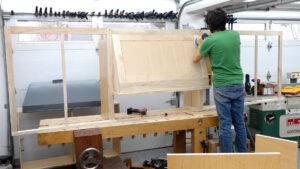
Welcome back to our home renovation. Today I am going to be working on this wall. It needs some upper cabinets and the surround for